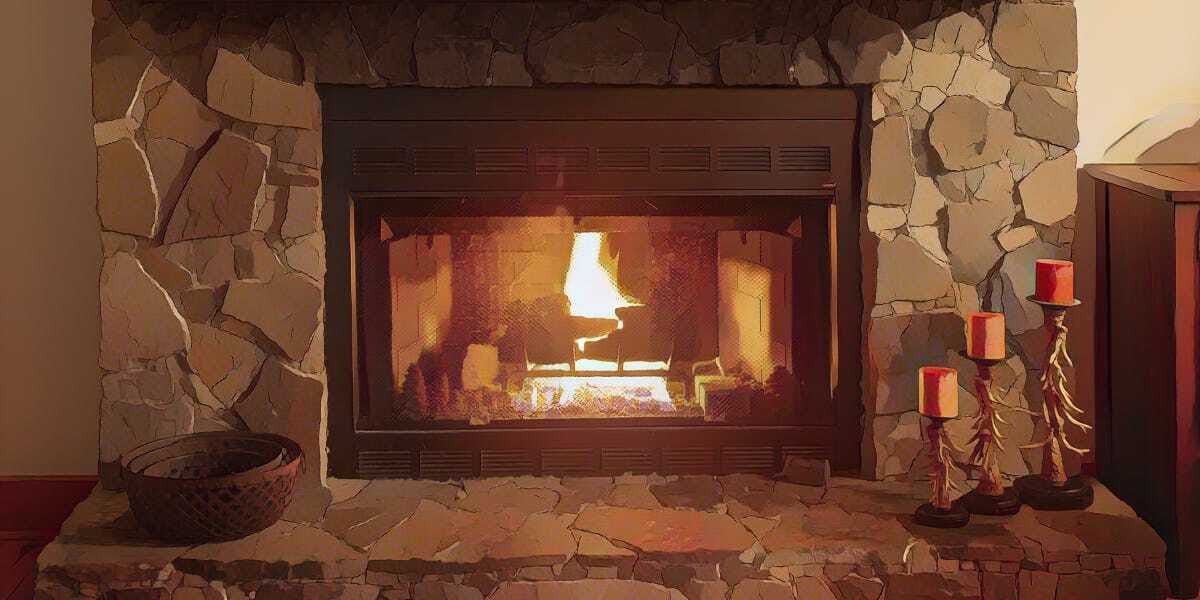
Did you know that the most effective way to clean chimney glass is to make a paste from fireplace ash and a little water? Ash is highly effective due to its unique physical and chemical properties, which counteract the build-up of soot on the glass. It contains alkaline compounds, such as potassium and calcium carbonate, which break down the acidic components of the soot. Its absorbent qualities also soak up residue.
Interestingly, ash is the by-product of the very same fire that caused the soot build-up in the first place. It is soft enough not to scratch ceramic chimney glass, making it ideal for cleaning. The important thing to note is that the solution doesn’t come from a fancy chemical cleaner bought from a shop — it’s right there in the fireplace, born from the very flames that created the soot. It's almost as if the ash has the power to restore clarity because it "understands" the soot on a fundamental level.
But what does this have to do with anxiety and overcoming it? Everything.
Just as soot on chimney glass accumulates through the residue of fire, anxiety builds up within us. It often comes from suppressed emotions — experiences and feelings we never expressed or properly addressed in time. Instead, they linger quietly within us until they resurface, asking for acknowledgment.
And just like with chimney glass, we can’t scrub this away with quick fixes from the outside world. We need the right tool — the one already within us — to ensure our safety and guide us toward resolution. That tool, paradoxically, is anxiety itself.
Anxiety and External Fixes
For as long as I can remember, I relied on external things to soothe my anxiety — escapes like TV, distractions, sports, and keeping busy with school or work. These things helped me manage my feelings, often only temporarily — sometimes for hours, sometimes for days, months or even years. They allowed me to forget, if only briefly, what was causing my worry.
However, some life experiences leave deeper emotional wounds. If these are repressed or unacknowledged, they don't simply disappear — instead, they remain hidden beneath the surface, waiting for the right moment to resurface so that they can finally be addressed.
The reality is that they resurface in challenging and often unexpected ways — but they always do, with the precision of a Swiss watch. As I mentioned in previous posts, my panic attacks were triggered not only by the death of my brother, but also by the subsequent events. I had repressed emotions from different periods of my life, and over the years they built up like soot on a chimney glass. My brother’s death became the trigger — the moment they resurfaced, asking to be acknowledged.
And just like with the chimney ash, the best tool for working through them was always within me. That tool was, and still is, anxiety.
As I’ve shared in previous posts, this difficult period turned out to be one of the greatest gifts of my life. It brought opportunities for growth and blessings that I still carry with me today. My view of anxiety completely changed — it went from being an enemy to be overcome to becoming a guiding light, pointing me towards what needed attention and healing.
This time also taught me the importance of sitting with my emotions: acknowledging them, welcoming them, and then gently letting them go. It is this process that creates release, rather than avoidance.
And this is why working on ourselves daily matters. By cultivating strength and resilience, we prepare ourselves for the challenges that are inevitable in life. Life never stops testing us, but when these moments arrive, we’re better prepared to face them.
The Power of Looking Within

The answer is always within us. Just as ash from a fireplace is the best way to clean the soot it leaves on the glass, our anxiety serves as a powerful guide, pointing us toward the repressed emotions that need to be acknowledged and released. Our inner resources — awareness, resilience, and the capacity to grow — uniquely equip us to face adversity with strength and clarity.
Anxiety itself is the way out of anxiety.